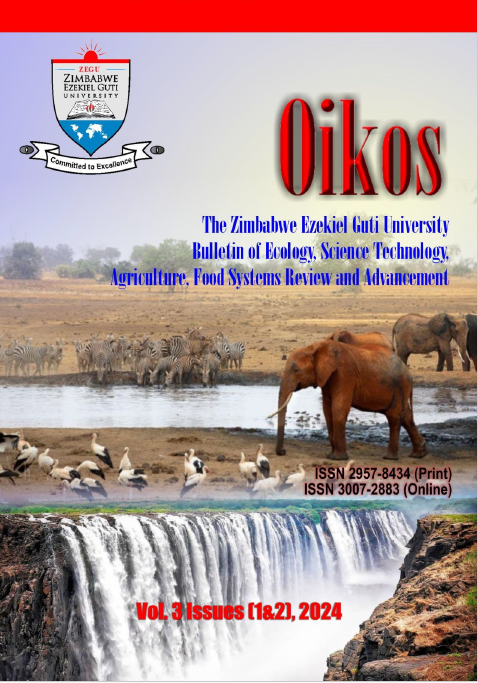Surface Water Quality Changes Induced by Underground Mining in Gwanda District of Matebeleland South Zimbabwe
DOI:
https://doi.org/10.71458/cxs9hs64Keywords:
water quality, underground mining, water pollution, surface waterAbstract
The study, from which this article sprang from, sought to assess the impacts of underground mining activities on surface water quality in Mtshabezi River in Gwanda District of Matebeleland South of Zimbabwe. The research adopts a mixed method approach that utilised both qualitative and quantitative approaches for in depth fact finding. The qualitative approach used depends on open ended questions, structured interviews, direct field observations while quantitative approach utilised depended on closed-ended questions, laboratory testing of water samples and use of statistical tools such as SPSS version 22.0 for data analysis. A survey of 82 respondents and interviews was conducted in the mining communities who depend on water from Mtshabezi River, in Gwanda to identify the main pollutants affecting water quality in Mtshabezi River. Water samples were collected to test for physiochemical parameters (temperature, pH, cyanide and concentration of Zn, Ni, Fe and Cu). Results from the tests conducted show that nitrates ranged from 3.5 and 8.4 that is within the range of WHO guideline of 10mg/l. From the data that was collected only 20% was within the WHO standards, High level of iron in Site 2 and 3 was as a result of direct deposition from the mine. The level of zinc concentration in Mtshabezi River was ranging from 0.4 to 3.8mg/l of zinc concentration that is above the limits of WHO guideline. The study recommends regular monitoring of surface water sources undertaken by EMA and sub-catchment councils to ensure the quality of water is not compromised.




